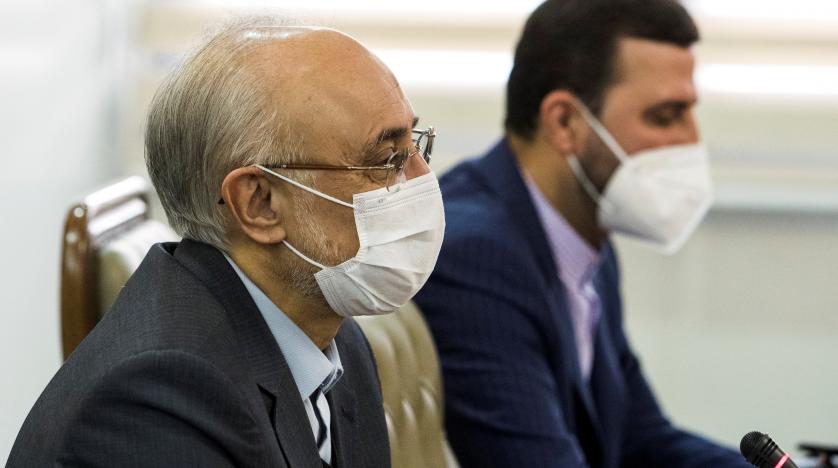Iran is producing nine grams (almost a third of an ounce) of uranium enriched to 60 percent purity per hour, the head of the country’s atomic agency said Friday.
“We are now getting nine grams per hour,” Ali Akbar Salehi of the Atomic Energy Organization of Iran said on state television, after Tasnim news agency reported that production was underway at Iran’s Natanz nuclear facility.
He said more details would be forthcoming and declined to further elaborate.
Earlier, parliament speaker Mohammad Bagher Qalibaf, quoted by state television, did not elaborate on the amount Iran planned to enrich. However, it is likely to raise tensions even as Iran negotiates with world powers in Vienna over a way to allow the US back into the 2015 nuclear agreement and lift the crushing economic sanctions it faces.
The announcement also marks a significant escalation after the sabotage that damaged centrifuges, an attack this past weekend suspected of having been carried out by Israel. While Israel has yet to claim it, the country is widely suspected of having carried out the still-unexplained sabotage at Natanz, Iran’s main enrichment site.
“The will of the Iranian nation is a miracle-maker and it will defuse any conspiracy,” state television quoted Qalibaf as saying. He said the enrichment began just after midnight Friday.
While 60% is higher than any level Iran previously enriched uranium, it is still lower than weapons-grade levels of 90%.
Iran had been enriching up to 20% — even that was a short technical step to weapons grade. The nuclear deal limited Iran’s enrichment to 3.67%.
The threat of higher enrichment by Iran already had drawn criticism from the US and three European nations in the deal — France, Germany and the United Kingdom.
The 2015 nuclear deal, which former President Donald Trump unilaterally withdrew the US from in 2018, prevented Iran from stockpiling enough high-enriched uranium to be able to pursue a nuclear weapon if it chose in exchange for the lifting of economic sanctions.
The weekend attack at Natanz was initially described only as a blackout in the electrical grid feeding above-ground workshops and underground enrichment halls — but later Iranian officials began calling it an attack.
Alireza Zakani, the hard-line head of the Iranian parliament’s research center, referred to “several thousand centrifuges damaged and destroyed” in a state TV interview. However, no other official has offered that figure and no images of the aftermath have been released.








































admin in: How the Muslim Brotherhood betrayed Saudi Arabia?
Great article with insight ...
https://www.viagrapascherfr.com/achat-sildenafil-pfizer-tarif/ in: Cross-region cooperation between anti-terrorism agencies needed
Hello there, just became aware of your blog through Google, and found ...